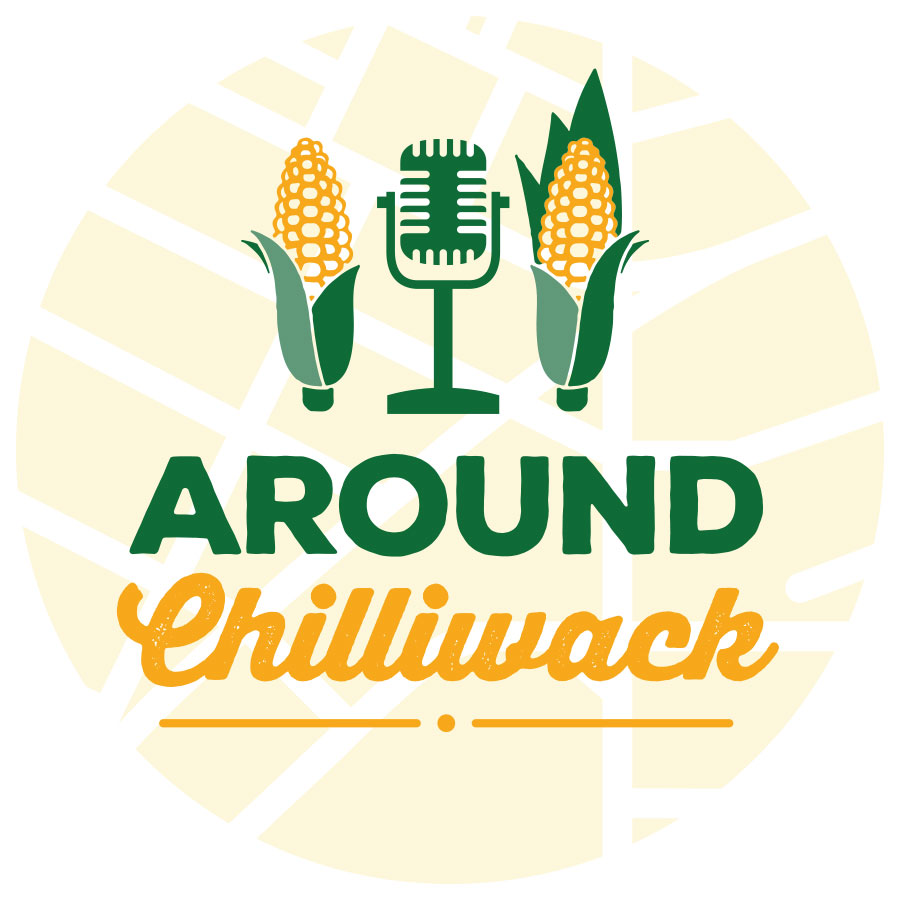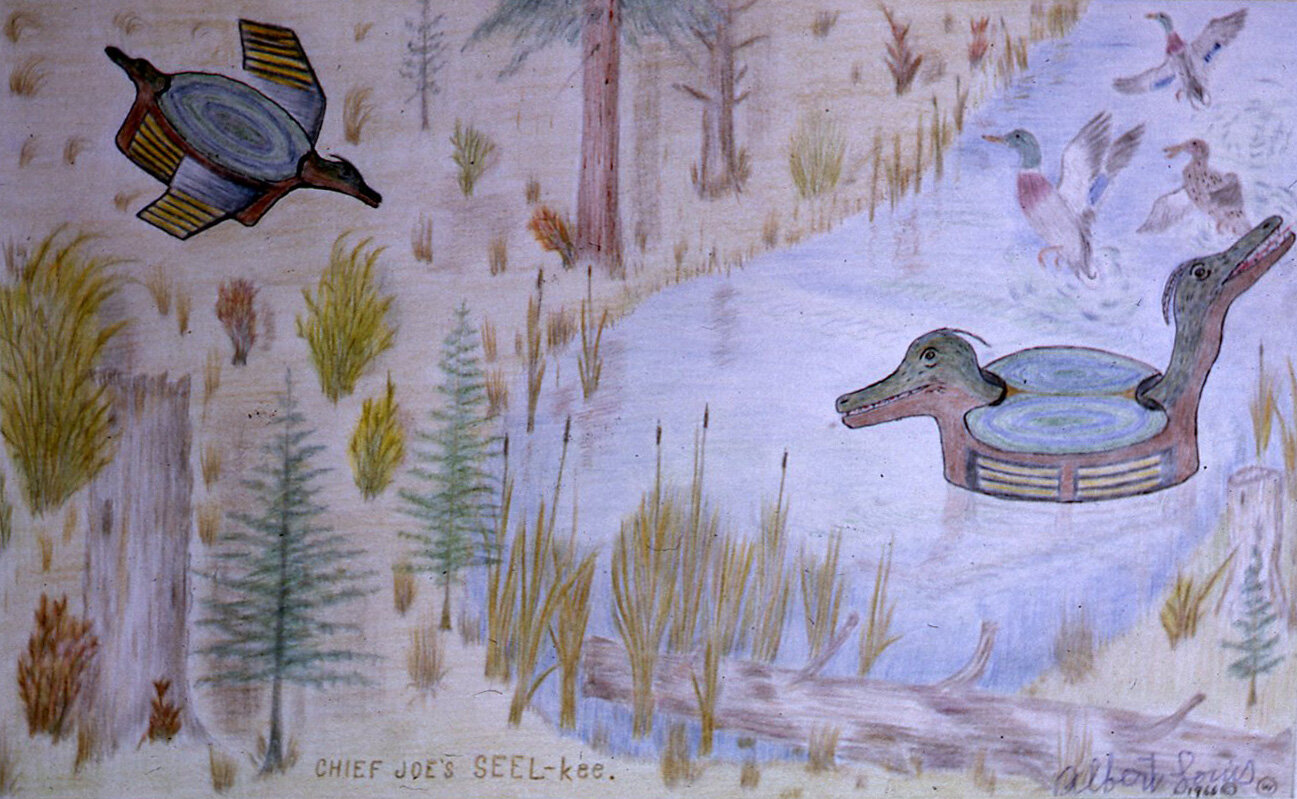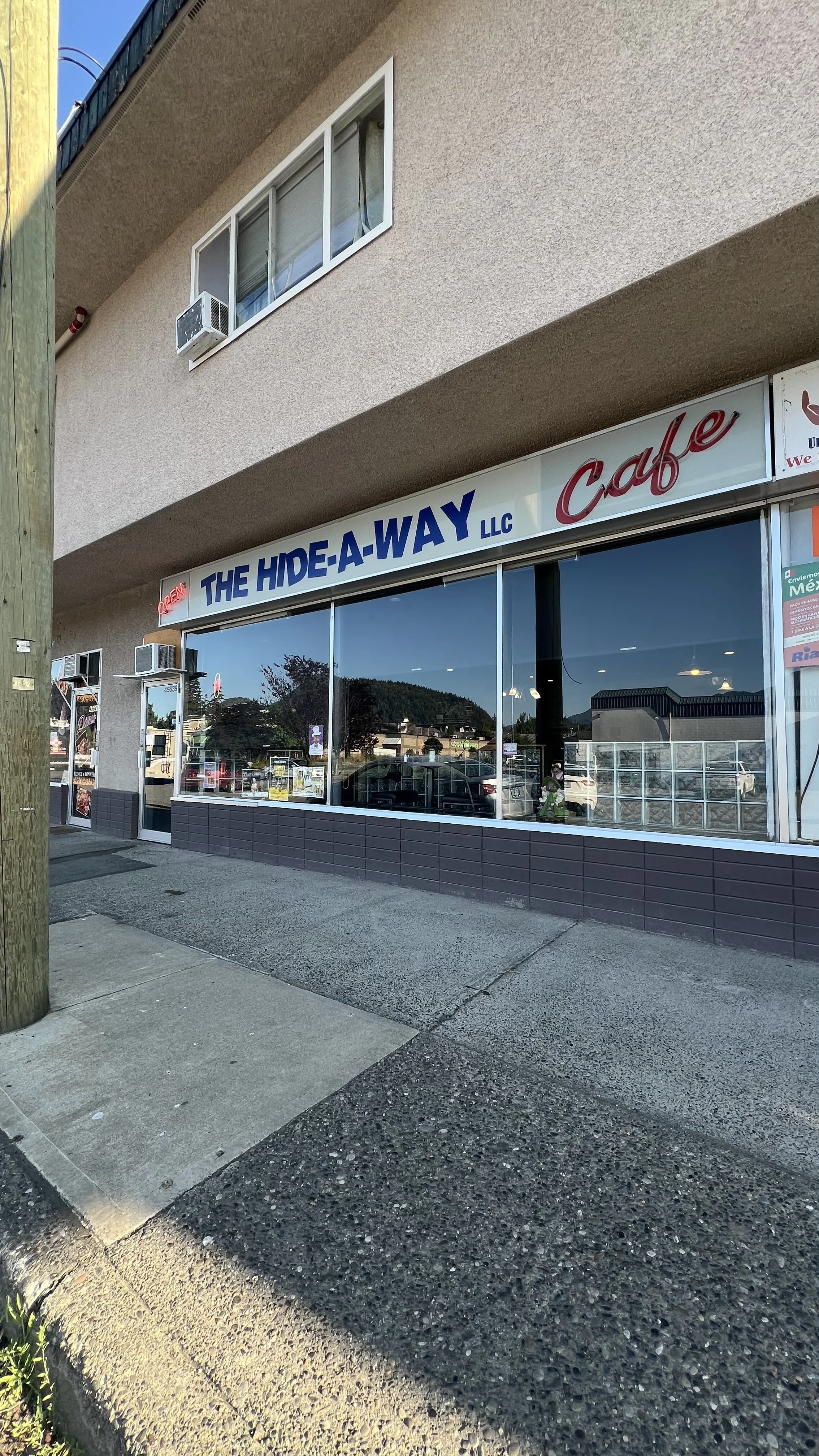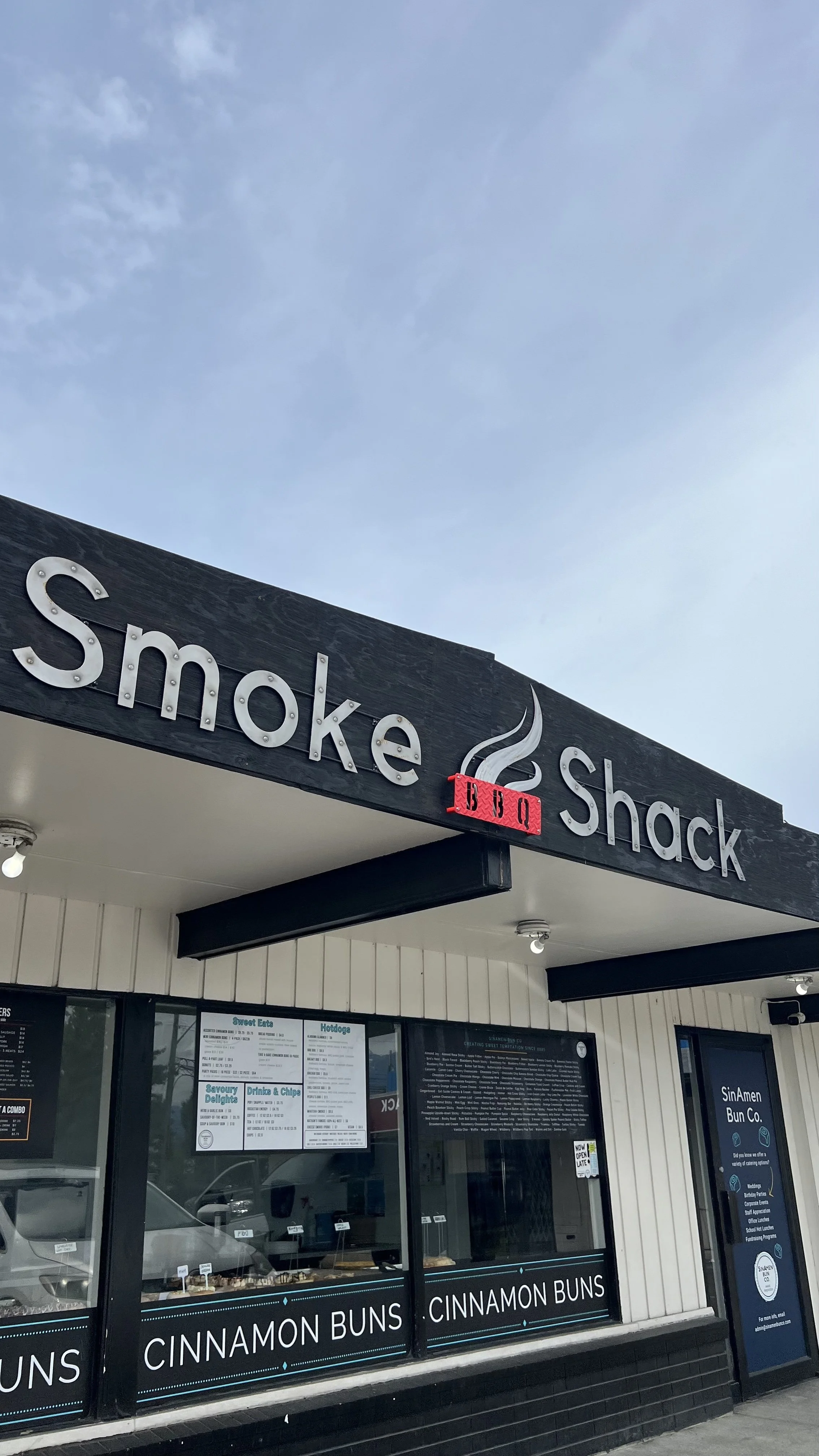Chilliwack Museum Moment: S’í:lhqey
/Photograph courtesy of the Chilliwack Museum and Archives, [2004.052.2186]
Chilliwack Museum Moment: S’í:lhqey
A part of S’ólh Téméxw (our world), the areas known today as Chilliwack Landing and Five Corners are located on the traditional land of the Ts’elxwéyeqw (Chilliwack) and Pelólhxw (Pilalt) tribes of the Stó:lō people. The Stó:lō people, the People are the River, are a part of the Coast Salish peoples and have been here since time immemorial.
Stó:lō elders and community members share lessons about the history and creation of S’ólh Téméxw through sxwōxwiyám (creation and transformer stories) and sqwélqwel (true news and family histories). These accounts, as well as the shxwelí (life force) which resides in all living and non-living things, connect current generations of Stó:lō to the land and to their ancestors.
Stl’á:leqem (supernatural creatures), such as the s’í:lhqey, have and continue to be reported by Stó:lō elders and community members in Chilliwack and the Five Corners area. Living in winding channels and marshlands, s’í:lhqey are normally described as serpents with two heads. S’í:lhqey have the power to cause a person’s body to twist and become sick until death if a person runs upon seeing the creature.
Learn more about s’í:lhqey through the Five Faces, Five Corners: The Social Experience of Chilliwack’s Downtown exhibition at the Chilliwack Museum and Archives, located at 45820 Spadina Road. The exhibition will run until April 18, 2020.
*Captions for the images are included below.
Learn more about the current exhibit here: https://www.chilliwackmuseum.ca/exhibitions/current-exhibits/
Caption from the first image:
A double-headed Snake “They made it on a 3ft wide post. The one head pointed down and the other up. The middle was round like a tub. It was like a big snake only the head like a horse’s head - long and smooth - a long mouth - long ears like a horse’s - it’s got a note and teeth in its mouth, like an alligator. They had it painted, lots of red Indian paint - on the eyes - the ears were long like a horse’s, only they were feathers.”
“This *SEEL-kee was seen by two brothers who were searching for their “power” to be in Indian doctors, down at *koh-KWAH-puhl. They saw it in a pond they used to *qoh-QIY-ah; it was down behind where the Chilliwack Exhibition Grounds are now.”
“My grandfather told me not to go there when shooting ducks - you away - Indians you know - when you see it - you pull your hair out of your head - like that - and blow it at him - and when you do that you are hurting him, - but when you see him, don’t turn around, or if you do, you are going to twist all up. That’s what my grandfather told me.”
Caption from the second image:
“A great big serpent - it’s got a head at both ends and it swims around in that slough - (where the Chilliwack Court House was later). To kill it, the man swam out to it and grabbed it and threw grass into its mouth, which killed it.
When it died, and after it rotted away, the man who got his power - because he had killed this big serpent - did what the serpent had told him. He burned the bones and then painted a picture of the serpent across the front of his big house, over the door. He marks the place where all the bones beyond - he pictured the shape of that serpent over the door to protect that house.”
The ‘power’ of the *SEEL-kee to destroy usually caused its victims to writhe and twist in pain until the collapsed. This was the punishment meted out, according to legend, to a raiding party who came from the cost to attack the house.
Caption from the third image:
Chief Joe was hunting at a big pond, south of Little Mountain, east of Chilliwack City, near where Prest Road is now.
“He heard this thing flying - it came right down into that lake - just like a duck - when he got to that lake he found out it wasn’t a duck. He said it was like a big tub floating, and while he was watching its head came up and started talking. It talked like a duck - like a Mallard. It was not long before another head came up - he had two heads - and how that thing could fly I don’t know; but the Indian said that thing could fly from lake to lake. I don’t understand, but that’s a great thing you know: but if you tell a white man he wouldn’t believe it, you know, but my grandfather, Chief Joe of *koh-KWAH-puhl, he saw it twice, it came right over him and it came down on to the lake just like a boat. He said it was just like a tub - then one head came up and it started talking - then the other head came up - like a duck’s head on a long neck.”
“That’s a *SEEL-kee - that’s what they called it.”
Captions provided from: Wells, Oliver N. Myths and Legends: STAW-loh INDIANS of South Western British Columbia. Vancouver, BC: Frank T. Coan Ltd, 1970.



![Photograph courtesy of the Chilliwack Museum and Archives, [2004.052.2186]](https://images.squarespace-cdn.com/content/v1/57105601746fb97f5df30963/1571708226063-6BL7MPK4MQSDB6C3WE2T/Photograph+courtesy+of+the+Chilliwack+Museum+and+Archives%2C+2004.052.2186%5D)































